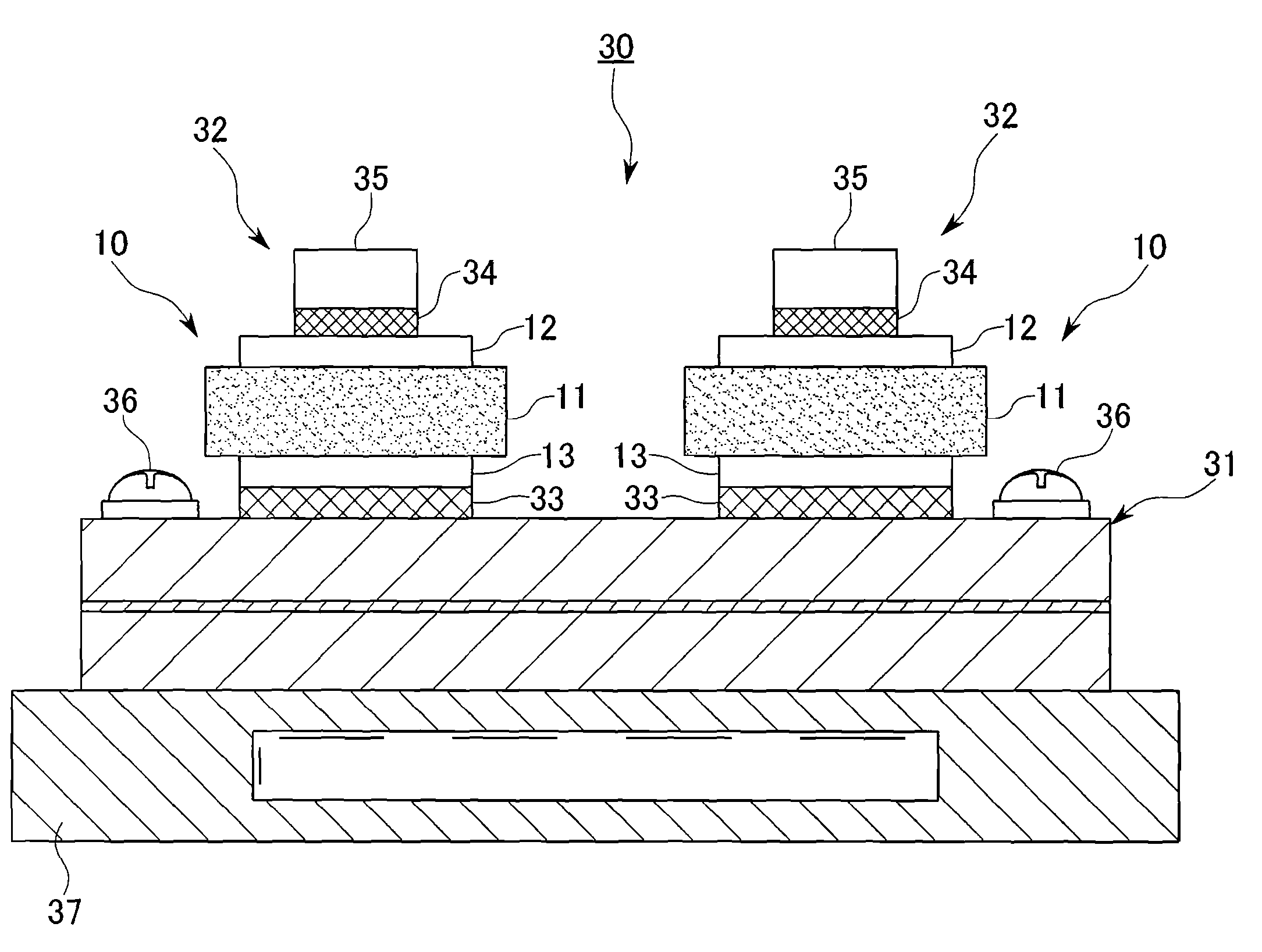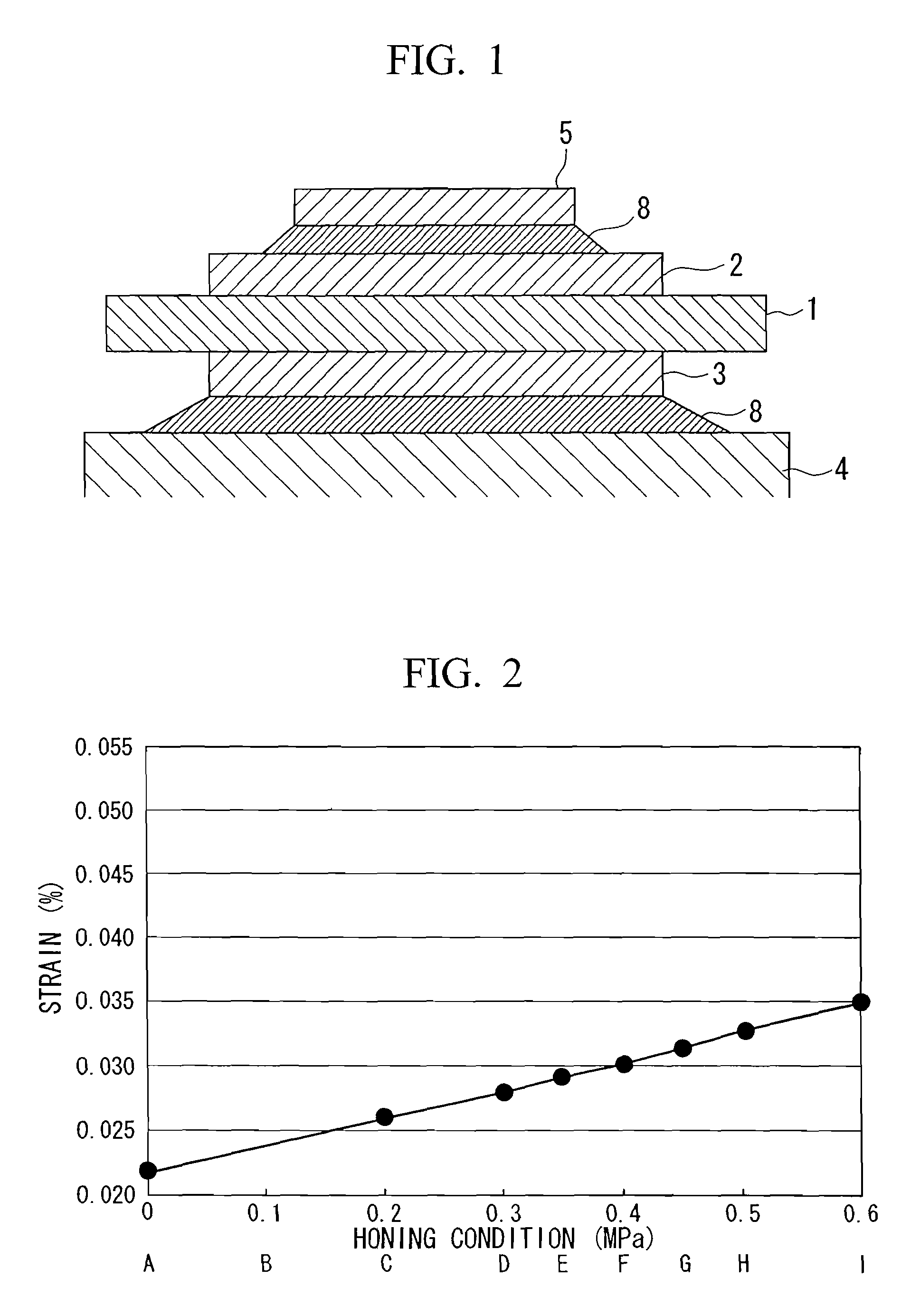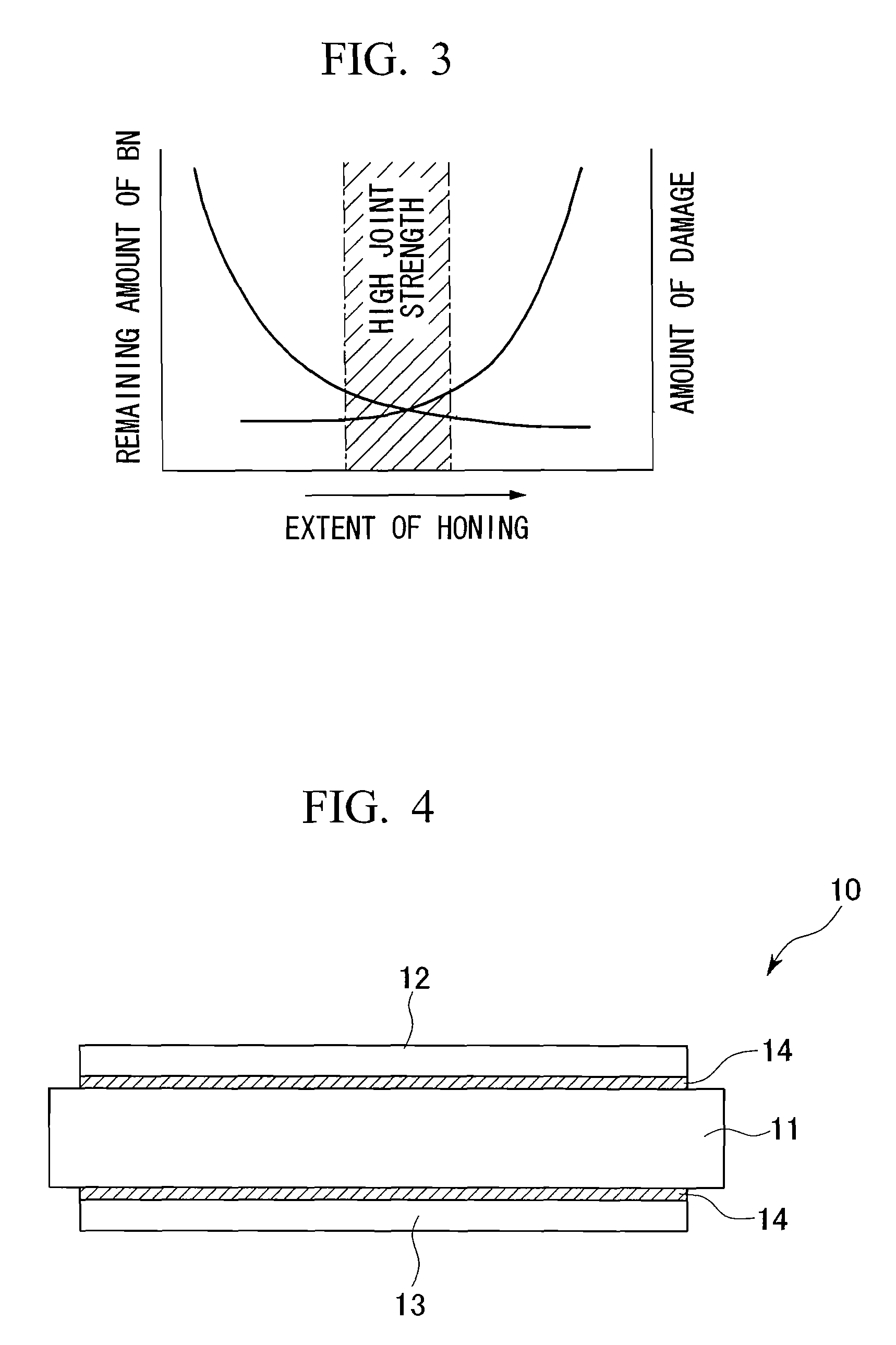Al/AlN joint material, base plate for power module, power module, and manufacturing method of Al/AlN joint material
a technology of al/aln joint material and power module, which is applied in the direction of electrical apparatus construction details, metal adhesion improvement, and improvement of insulation substrate adhesion, etc., can solve the problems of low strength of aln base plate itself, insufficient joint strength, and inability to improve reliability. , to achieve the effect of high joint strength, good reliability and high strength
- Summary
- Abstract
- Description
- Claims
- Application Information
AI Technical Summary
Benefits of technology
Problems solved by technology
Method used
Image
Examples
specific example 1
[0098]The power module base plate of the present invention shall be described more specifically by a specific example. First, samples of the AlN ceramic base plate 1 (50 mm×30 mm, 0.635 mm in thickness) indicated by reference symbols A to J were surface-treated under different conditions. The metal circuit plate 2 made of Al with a purity more than 99.9% (100 mm×5 mm width, 0.4 mm in thickness) and the metal plate 3 made of Al with a purity more than 99.9% (50 mm×30 mm width, 0.4 mm in thickness) were laminated and joined on both faces of each sample A to J, with the Al—Si foil (50 mm×5 mm width, 0.1 mm in thickness) being sandwiched therebetween. Joint surfaces were evaluated and joint strengths were measured for the samples manufactured in this manner.
[0099]To change the damage amount on their surfaces, honing was performed on each sample Ato J, under a different honing number expressed by reference numerals 1 to 3 and different honing pressure expressed by weak, intermediate, and...
specific example 2
[0147]The second specific example of the present invention shall be described.
[0148]AlN base plates whose materials were honed under different pressures before joining were temperature cycle tested (−45° C. to 125° C.). It was checked whether or not there was peeling by ultrasonography every 1000 cycles, and the greatest temperature cycle number without peeling was determined as the life of the base plate.
[0149]The cross section near the AlN / Al interface was observed by a scanning electron microscope (SEM), and the depth of the three-dimensional network structure was measured by element surface analysis of the infiltration depth in the AlN base plate of Si included in the Al component using an electron probe X-ray microanalyzer (EPMA).
[0150]The maximum height Ry was measured by a surface roughness measurement (manufactured by Mitsutoyo Corp., Surftest501), and specific surface area was measured by a laser microscope (manufactured by KEYENCE Corp., VK8550). Both the maximum height an...
PUM
| Property | Measurement | Unit |
|---|---|---|
| purity | aaaaa | aaaaa |
| surface roughness | aaaaa | aaaaa |
| surface roughness | aaaaa | aaaaa |
Abstract
Description
Claims
Application Information
 Login to View More
Login to View More - R&D
- Intellectual Property
- Life Sciences
- Materials
- Tech Scout
- Unparalleled Data Quality
- Higher Quality Content
- 60% Fewer Hallucinations
Browse by: Latest US Patents, China's latest patents, Technical Efficacy Thesaurus, Application Domain, Technology Topic, Popular Technical Reports.
© 2025 PatSnap. All rights reserved.Legal|Privacy policy|Modern Slavery Act Transparency Statement|Sitemap|About US| Contact US: help@patsnap.com



